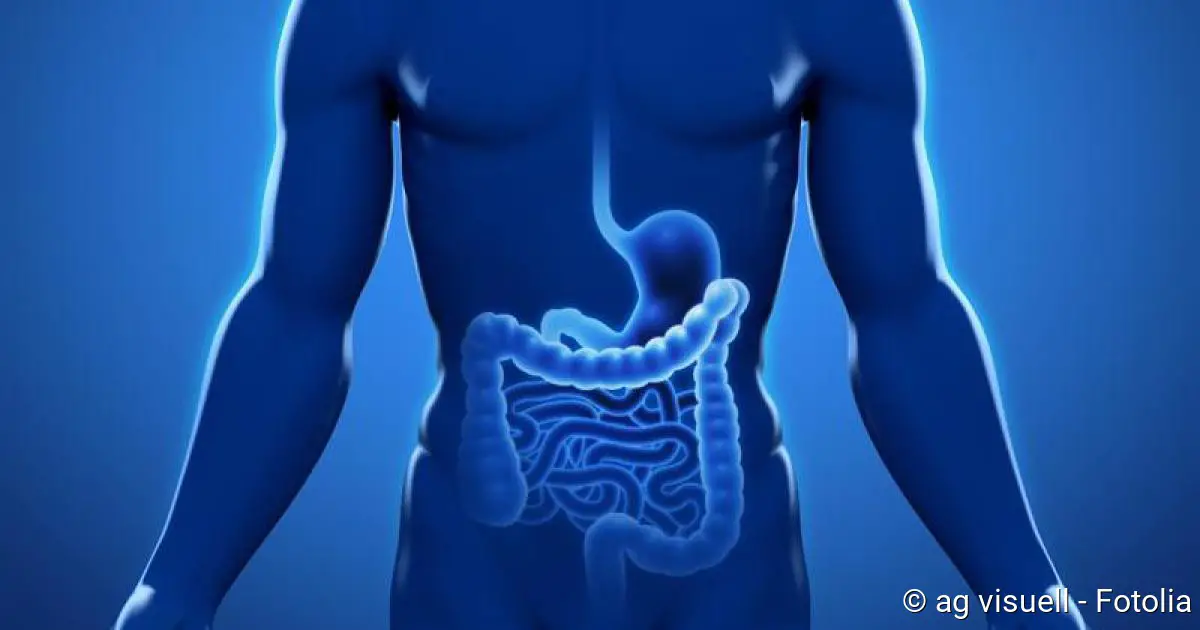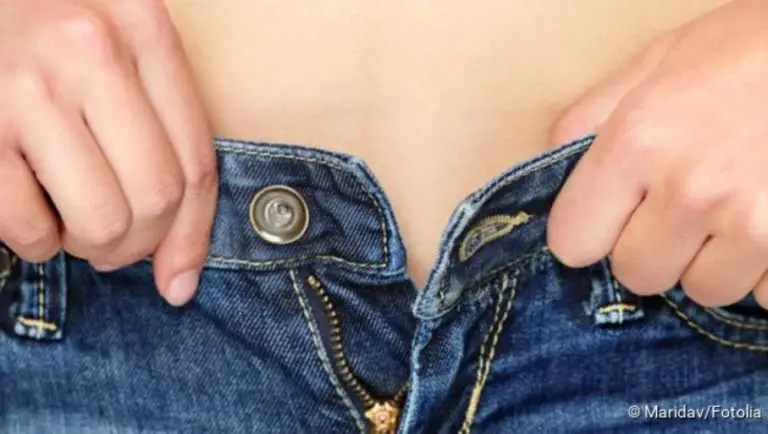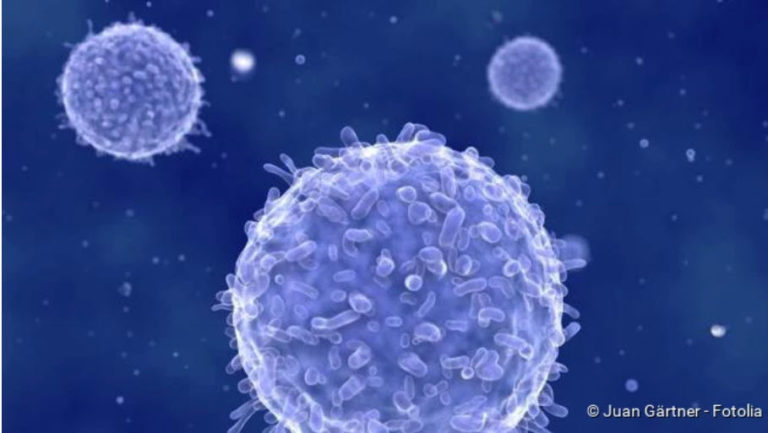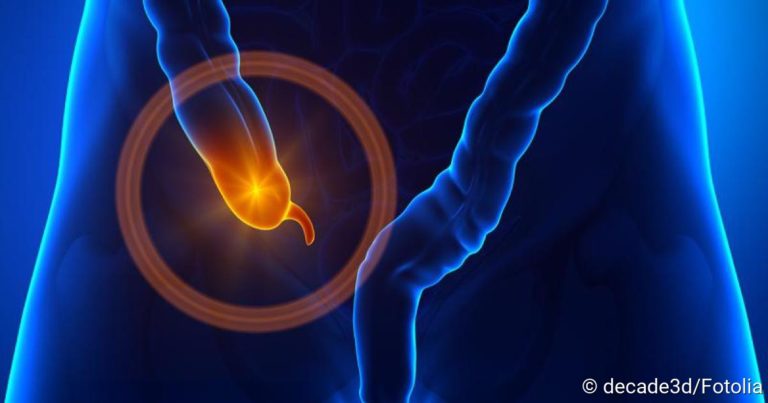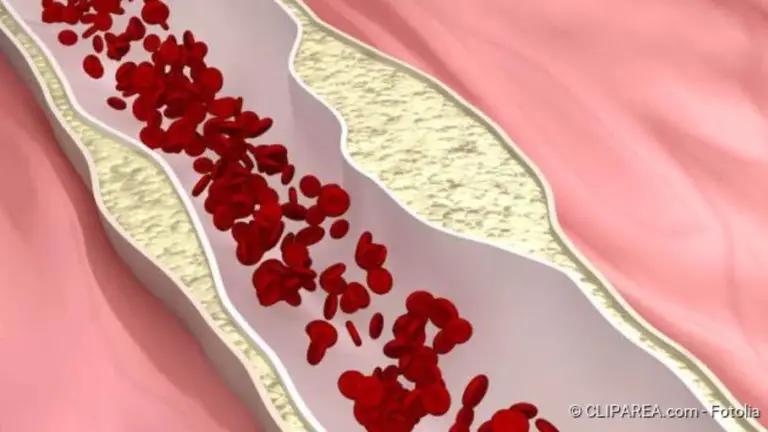Inguinal hernia: symptoms, causes, treatment
Inguinal hernia: symptoms, causes, treatment
An inguinal hernia (hernia inguinalis) occurs when layers of the abdominal wall break through the inguinal channel. A typical symptom is a palpable swelling, similar to a bump, which can often be pushed away inwards. Pain can also occur, which increases under stress. In most cases the patients are male. An inguinal hernia in women or girls is less common. The therapy usually consists of an operation. Read more about the topic: What exactly is an inguinal hernia? How can you recognize a hernia? How is it diagnosed and treated?
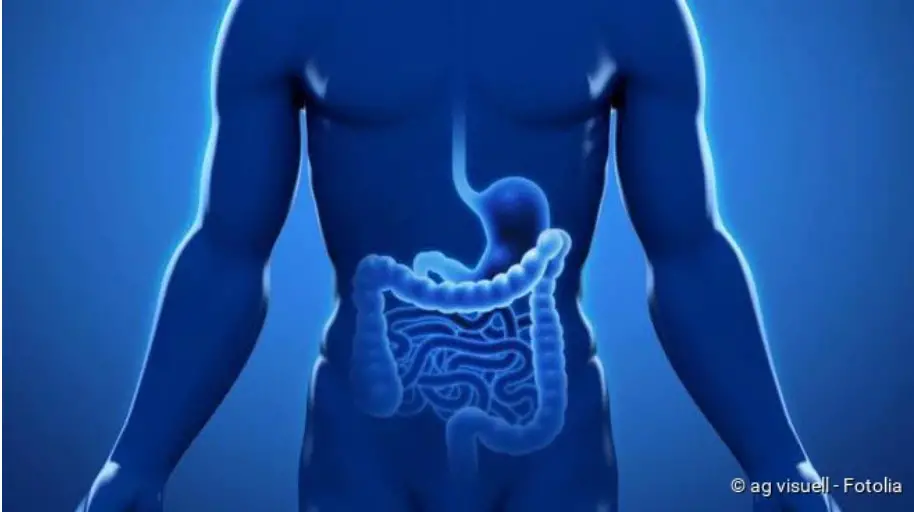
Inguinal hernia: short overview
- Important symptoms: visible and palpable swelling in the groin area, pulling and possibly pain, which increases under stress
- Cause: weakness in the abdominal wall (congenital or acquired)
- Risk factors: severe pressure (sneezing, coughing, pressing during bowel movements, lifting heavy loads etc.), tissue weakness, diabetes mellitus, asthma, COPD, cystic fibrosis (cystic fibrosis)
- Complications: Entrapment
- Treatment: usually surgery. In men with an inguinal hernia that shows no symptoms and does not become enlarged, it is also possible to wait and observe the hernia at first.
Inguinal hernia: symptoms
Even if the name suggests otherwise: In a hernia (hernia inguinalis), no bone is broken, but tissue in the groin area is penetrated – the so-called inguinal canal. This tubular connection between the abdominal cavity and the outer pubic region pulls diagonally from the back to the front. This channel is where the blood and lymph vessels and the spermatic cord run in men and one of the maternal ligaments in women.
If this inguinal canal is pierced in an inguinal hernia, this can be recognised by a visible and/or palpable swelling in the groin region, which can often be pushed away inwards. Sometimes the genital region is also affected by the inguinal hernia: In women, the swelling can then occur in the area of the labia, in men it can be on the scrotum.
In most cases the hernia symptoms (woman & man) appear on the right side.
Inguinal hernia: pain
In many cases the hernia does not cause any pain. Affected people are more likely to report an indeterminate feeling of pressure or pulling, sometimes also abdominal pain or a foreign body sensation in the groin area.
When inguinal hernia pain occurs, it can extend to the testicles or labia. If the abdominal pressure increases, for example when coughing or lifting loads, the symptoms become worse. At rest and when lying down, however, the hernia symptoms subside. So if someone is more likely to have pain while lying down / at night, it is usually not a hernia. Instead, a hip joint or muscle disease, for example, may be behind it.
Both pain and swelling increase under stress. In the case of particularly intensive signs of hernia, tissue may already be trapped. Then you should see a doctor immediately!
Symptoms of hernia in children
To recognize a hernia in children is not always easy. Parents often accidentally discover the visible swelling in the groin or genital area when bathing, dressing or undressing their child. The child reacts sensitively when pressing on it. Further signs of inguinal hernia in children may be:
- Crying or apparently unprovoked crying (especially babies and infants)
- Refusal to eat
- major uproar
Incarcerated hernia: warning symptoms!
In rare cases of an inguinal hernia, parts of the intestines (such as intestinal loops) are trapped. These are then no longer sufficiently supplied with blood and can die. The symptoms of a hernia with incarceration are much more intense, for example:
- intense pain
- Redness of the affected area
- Nausea and vomiting
If someone shows such symptoms, a doctor must be alerted immediately. An intestinal obstruction and life-threatening peritonitis are imminent!
Severe pain in an inguinal hernia is a symptom of (dangerous) complications. See a doctor immediately!
The gonads develop in the body and migrate through the groin into the scrotum – this is then the weak point. Overall, it is assumed that every fifth man can develop a hernia. It is conspicuous that there is a familial accumulation, i.e. if the father or grandfather had a hernia, the own chance of it is higher.
Hernia: Causes and risk factors
The abdominal cavity is largely closed and lined with a fine skin, the peritoneum. It houses organs such as the stomach, liver and intestines. Gravity pulls the organs down. The abdominal wall holds it in place. But especially in the lower abdominal area there is still a certain pressure.
This pressure is also felt by the inguinal canal. Especially when lifting heavy loads, sneezing, coughing or pressing (for example during bowel movement), the abdominal organs press on the inguinal canal. Normally, it can withstand the strain – thanks to the strong muscles, ligaments and firm connective tissue that surround it.
However, if the pressure becomes too great, a gap develops in the inguinal tissue (hernial orifice): the peritoneum bulges outwards like a sack at this point. This is why it is also called a hernia sac. Sometimes parts of the intestines (usually parts of the bowel) – enclosed by the hernia sac – pass through the gap and out of the abdominal cavity (hernia contents).
In an inguinal hernia, the pressure of the abdominal organs (e.g. when coughing, sneezing or lifting heavy loads) on the inguinal tissue becomes too great and the inguinal canal breaks. The peritoneum then bulges outwards like a sack and it can happen that parts of the intestine come out through the gap in the inguinal canal.
Indirect and direct inguinal hernia
Most patients have an indirect inguinal hernia: Here the hernia sac passes laterally through the inguinal canal and can reach the scrotum or the labia.
The indirect inguinal hernia is in most cases congenital: it is then based on an inguinal canal that is not completely closed. Normally the inguinal canal is lined by the peritoneum until it recedes at birth and usually closes completely by the end of the 1st year of life. If this does not happen, a congenital indirect inguinal hernia often develops. Babies, children and young people are most frequently affected, with boys more frequently affected than girls.
Rarely does an indirect inguinal hernia develop later in life (acquired indirect inguinal hernia).
In contrast, the direct inguinal hernia is always acquired. It develops at a weak point in the wall of the inguinal canal. The hernia sac pushes directly through the abdominal wall, so it does not reach the genital region. Various factors can promote this wall weakness and thus direct inguinal hernia (such as operations or various diseases: see below). Mostly adults develop this form of inguinal hernia. Women are relatively rarely affected. Usually the patients are older men.
Risk factors
There are various factors that favour inguinal hernia, for example because they are associated with tissue weakness (such as Marfan syndrome) or increase abdominal pressure (such as constipation or constant coughing in heavy smokers or COPD). These risk factors for inguinal hernia include
- Diverticulosis (protrusion of the intestinal wall)
- Varicose veins (varices)
- Marfan syndrome (genetically determined connective tissue disease)
- Diabetes mellitus
- Asthma
- COPD
- cystic fibrosis (mucoviscidosis)
- Overweight
- Smoking
- Malformations of the urinary tract and genitals
In children, umbilical hernias (omphalocele) or an intestinal prolapse (gastroschisis) can lead to increased pressure in the abdominal cavity. The possible consequence is a hernia. During pregnancy the weight load in the groin area can cause a hernia. Children born prematurely are also more susceptible to inguinal hernia.
In addition, the inguinal hernia is more common in some families. This suggests that genes also play a role.
Inguinal hernia: examinations and diagnosis
If you suspect a hernia, go to the doctor quickly. The first contact person can be the family doctor or paediatrician. However, inguinal hernia is then usually treated by specialized surgeons.
First, the doctor will take the patient’s medical history in a so-called anamnesis interview. He may ask the following questions, for example:
- What complaints do you have?
- Where exactly do you feel pain?
- Do the complaints become stronger under stress?
- Has anyone in your family ever had a hernia?
- Have you ever had surgery on your stomach or in the groin area?
Physical examination
During the physical examination the doctor first asks the patient to stand up straight. He then palpates the patient’s groin region to detect any swelling. He can also instruct the patient to cough or tense the abdominal muscles, which increases the pressure in the abdomen. This usually increases the swelling in the case of a hernia. The doctor can repeat the palpation examination with the patient lying down.
It is also checked whether the content of the inguinal hernia can be pushed back into the abdominal cavity with the fingers. If this is possible, a so-called reponible hernia is present. However, if the doctor cannot push the hernia contents back in the correct position, the hernia is irreducible.
To clarify a suspected inguinal hernia, a rectal examination may also be necessary. The doctor palpates the last part of the rectum with one finger.
The typical swelling in the groin region is often enough for the doctor to make the hernia diagnosis.
Ultrasound examination
If the physical examination is not sufficient to clearly diagnose a hernia, the doctor can examine the groin area by means of ultrasound (lying down and standing). In this way it is also possible to assess how pronounced the inguinal hernia is and how urgently it needs to be treated. Especially for patients who are very overweight (obesity), an ultrasound examination or even a magnetic resonance tomography (MRT) may be necessary.
Exclusion of other diseases
Sometimes other diseases can also be behind a supposed inguinal hernia. These so-called differential diagnoses include enlarged lymph nodes, for example: They can cause swellings similar to those of a hernia.
Particularly in athletes, a suspected inguinal hernia often turns out to be a so-called soft groin (athlete’s groin or footballer’s groin). As in the case of a hernia, those affected suffer from pain in the groin region, which often increases when coughing, sneezing or pressing. Sporting activity (sprinting, shooting balls and stopping them with the inside of the foot, etc.) can overload the muscles and tendons in the groin region and the inguinal canal and lead to minor injuries – a soft groin is created.
A water break (hydrocele) also causes a dent. However, it is a bulging, elastic bulge in the course of the spermatic cord which cannot be shifted. In ultrasound, the water break is usually clearly visible as a kind of bullet.
Sometimes a suspected inguinal hernia in men (boys) turns out to be in fact a testicle located in the groin (undescended testicle).
When is a hernia an emergency?
An inguinal hernia is an emergency when severe pain with nausea and vomiting occurs. In this situation, infants scream apparently without reason, refuse to eat and are very restless. Only later does the abdomen appear distended, painful and bulging. In this case, you must call a doctor immediately!
General information about hernia treatment
An inguinal hernia in children must be treated medically, because the inguinal hernia does not heal on its own. In addition, there is always the risk of abdominal tissue being trapped.
According to the guidelines of the European Hernia Society (EHS), a female hernia should always be operated on, even if it does not cause any symptoms. It could also be a femoral hernia (femoral hernia) – in addition to or instead of the inguinal hernia. A femoral hernia can also cause pain and possibly also swelling in the groin region, but is often difficult to identify clearly. The dangerous thing about it is that it leads to entrapment in up to 30 percent of cases. Since women suffer a thigh hernia much more frequently than men, a (supposed) inguinal hernia is therefore always operated on.
An inguinal hernia in men that shows no symptoms and does not progress (i.e. does not become enlarged) has also always been operated on. The justification was the risk of entrapment. However, according to a new study, this risk is only slight. Therefore, experts now recommend “watchful waiting” for such patients.
Some people who have already had an inguinal hernia operation will later get a new inguinal hernia (recurrent inguinal hernia). Doctors will then decide on a case-by-case basis when and how to repeat the operation.
The following applies to all hernia patients – if intestines are trapped, surgery must be performed immediately!
Hernia surgery
A hernia operation is one of the routine procedures. Various surgical techniques are used. A distinction is made here:
- open procedures: Here the doctor makes a larger incision and moves the hernia contents back into the abdominal cavity. Usually either an artificial net is used or connective tissue and muscles are used to prevent a relapse.
- minimally invasive procedures: These surgical techniques manage with several small incisions. Usually a net is inserted for stabilization. The relapse rates are higher here, but the pain is often not as persistent as after open surgery.
The doctor will decide which method is most suitable in each individual case on a case-by-case basis.
You can read more about the procedure of an inguinal hernia operation and the possible complications in the article Hernia surgery.
Inguinal hernia: course of disease and prognosis
Most inguinal hernias (hernias) are harmless. However, visceral tissue can become trapped at any time. Doctors refer to this as incarceration. The patient must then be operated on within a few hours, because if the intestinal loop is trapped, there is a risk of intestinal obstruction. The intestinal wall can also break open so that the contents (faeces) leak out. Then a life-threatening peritonitis can develop.
Depending on its location, the inguinal hernia can also interrupt the blood supply to the testicles or ovaries. Without treatment the reproductive organs are damaged.
Hernia operations are performed without complications for most patients. Sometimes, however, a relapse (recurrence) occurs later, i.e. a new inguinal hernia is formed.
